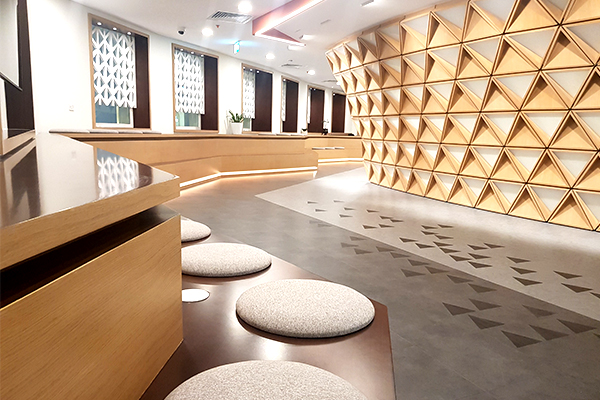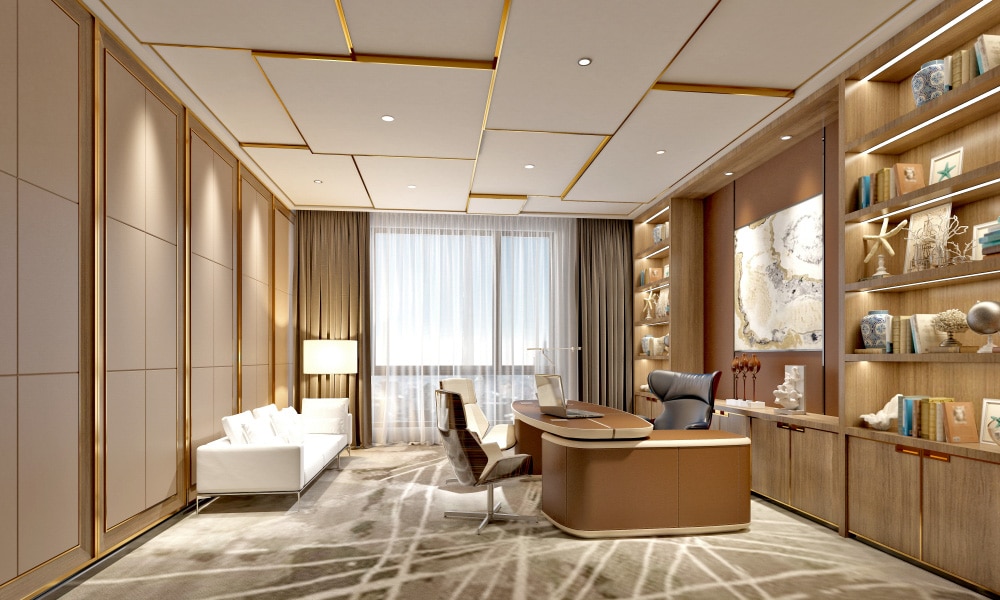When planning an office fitout, lighting is often overlooked, yet it plays a critical role in the productivity and wellbeing of employees. The right lighting can create a more comfortable, efficient, and positive work environment, while poor lighting can lead to issues like eye strain, headaches, and even a decline in mental health. Let’s explore how thoughtful lighting design in office fitouts can boost employee wellbeing and contribute to a more harmonious workplace.
Why Lighting Matters in Office Design
Lighting is not just about visibility – it influences everything from mood to energy levels. Studies have shown that natural light exposure can enhance workplace satisfaction, increase focus, and improve sleep quality. On the other hand, dim or overly harsh lighting can negatively impact employee performance and contribute to long-term health issues.
In an office environment where employees spend the majority of their day indoors, it’s essential to get the lighting right. By incorporating strategic lighting solutions into your office fitout, you can create a space that supports employee wellbeing and fosters productivity.
Types of Lighting to Consider for Office Fitouts
When designing an office fitout, it’s important to consider different types of lighting that can serve various purposes:
- Natural Light: Maximising the amount of natural light in an office is one of the most effective ways to enhance employee wellbeing. Natural light helps regulate circadian rhythms, which improve sleep patterns and mood. Ensure that desks and workstations are positioned near windows to take full advantage of daylight.
- Ambient Lighting: This general lighting fills the office space, providing overall illumination. It should be soft and evenly distributed to avoid glare or shadows. LED panels and recessed lighting are popular choices for ambient lighting as they are energy-efficient and provide a clean, modern look.
- Task Lighting: Task lighting is essential for focused work, such as reading or typing. Adjustable desk lamps or under-cabinet lighting can help reduce eye strain and improve concentration by providing direct light where it’s needed most.
- Accent Lighting: Accent lighting adds visual interest to an office, highlighting certain areas or features, such as artwork or architectural details. While not directly related to productivity, this type of lighting contributes to the overall aesthetic and can help create a more pleasant and engaging workspace.

The Role of Colour Temperature
In addition to the type of lighting, the colour temperature of your office lighting can significantly affect employee wellbeing. Colour temperature is measured in Kelvins (K) and ranges from warm (yellowish) to cool (bluish) light.
- Warm Lighting (2700K – 3000K): This type of lighting creates a cosy, relaxing atmosphere, making it suitable for break rooms, lounges, or collaborative areas where employees can unwind.
- Cool Lighting (4000K – 5000K): Cool lighting is more suitable for task-oriented areas like workstations, as it helps employees stay alert and focused. This colour temperature closely mimics natural daylight, which is why it’s often used in offices to promote productivity.
Balancing Artificial and Natural Light
Striking a balance between artificial and natural light is key to creating an optimal work environment. While natural light is the ideal choice for office spaces, not every office can rely solely on daylight. In these cases, artificial lighting should complement natural light, filling in any gaps to maintain consistency throughout the office.
Additionally, avoid placing screens or workstations directly in front of windows where natural light might cause glare. Instead, opt for blinds or window treatments that diffuse the light, providing a comfortable brightness without causing eye strain.
Lighting and Employee Wellbeing
Good lighting goes beyond aesthetics – it can have a profound impact on mental and physical health. Bright, cool lighting during the day can boost energy levels, helping employees stay alert and productive. Conversely, poor lighting can lead to fatigue, stress, and even depression over time.
Incorporating various lighting elements in your office fitout, such as dimmable lights or motion sensors, allows employees to control their lighting environment, fostering a sense of autonomy and comfort.
Beyond lighting, the choice of commercial office furniture also contributes to the overall wellbeing of employees. Ergonomic chairs and desks, paired with thoughtful lighting design, create a holistic environment where employees feel supported both physically and mentally. This combination helps reduce strain, enhance focus, and promote long-term health and productivity.
Final Thoughts
As you can see, lighting plays a vital role in the success of office fitouts and can significantly impact employee wellbeing. By incorporating natural light, choosing the right types of artificial lighting, and balancing colour temperatures, you can design an office that supports your team’s mental and physical health.


